Updated: 14 May 2024 by Sylwia (MyCrochetory)
Discover the difference between crochet vs knitting yarn. Explore yarn types, tools, & techniques. Find the perfect match for your project!

Introduction
Are you someone who likes to knit or crochet? Many people enjoy both crafts, but there’s often a discussion about which one is better.
However, no matter which one you prefer, both knitting and crochet rely on one important thing: YARN. This guide is all about yarn for knitting and crocheting.
We’ll talk about basic things like crochet stitches and knitting patterns. We’ll also cover the tools you need, such as circular needles and stitch markers. Understanding different types of yarn is crucial because it can change how your projects turn out.
Whether you’re making big blankets or tiny flowers, the kind of yarn you use matters a lot. By the end of this guide, you’ll know all about crochet vs knitting yarn, and you’ll understand what makes them different and how to pick the right one for your project.
Remember, crafting is all about having fun and expressing your creativity. So let’s get started on our yarn-filled journey!
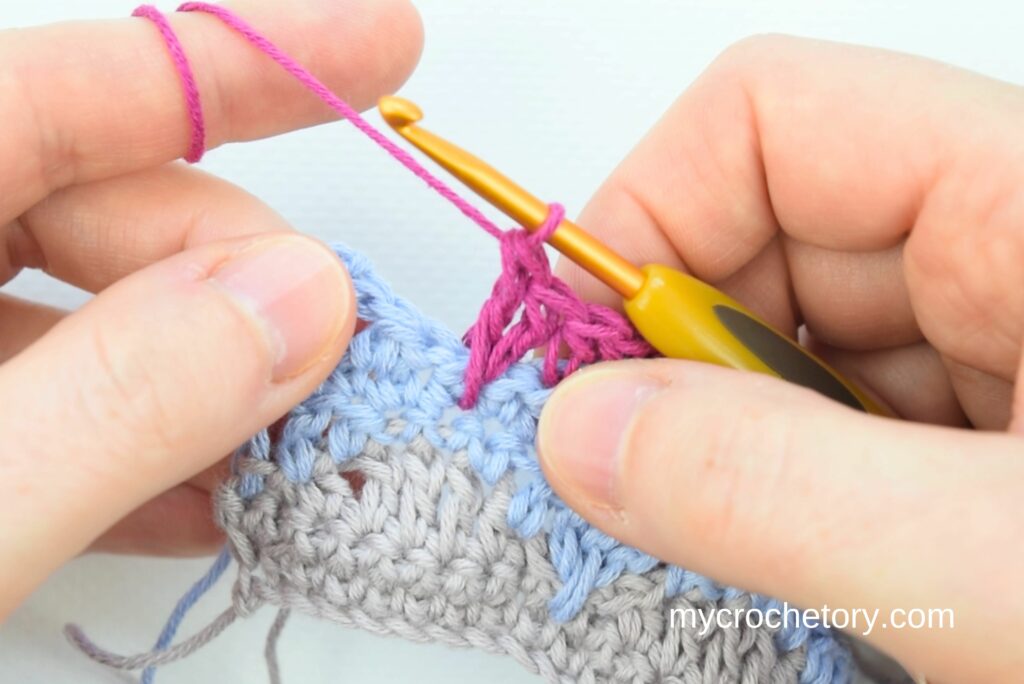
Understanding Crochet Stitches
Let’s start by looking at crochet stitches, the foundation of crochet projects, and how they differ from knitting.
Crochet stitches are loops of yarn that you create using a single crochet hook. From basic stitches like the chain stitch to more intricate ones like the double crochet, each stitch serves a unique purpose in crafting scarves, hats, or blankets.
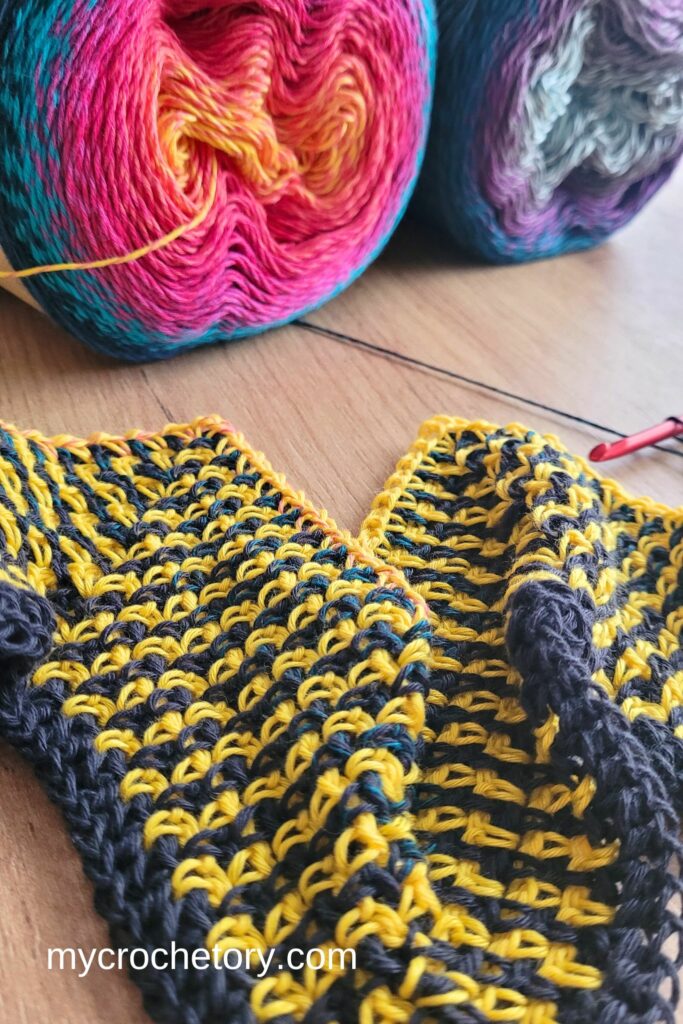
Getting Started with Crochet Projects
It’s good to begin with simple stitches like the single crochet, perfect for beginners. Once you’re comfortable, you can explore more complex stitch patterns to enhance your crochet fabric.
For example, if you’re making a scarf, you might opt for the basic single crochet stitch. However, if you’re feeling adventurous, the Tunisian crochet stitch creates a beautiful knit-like pattern.
When choosing a crochet pattern, consider your skill level and the size of your project. Larger projects may require more time and patience, but they can be very rewarding. Traditional crochet techniques offer a timeless appeal, perfect for creating heirloom-quality pieces.
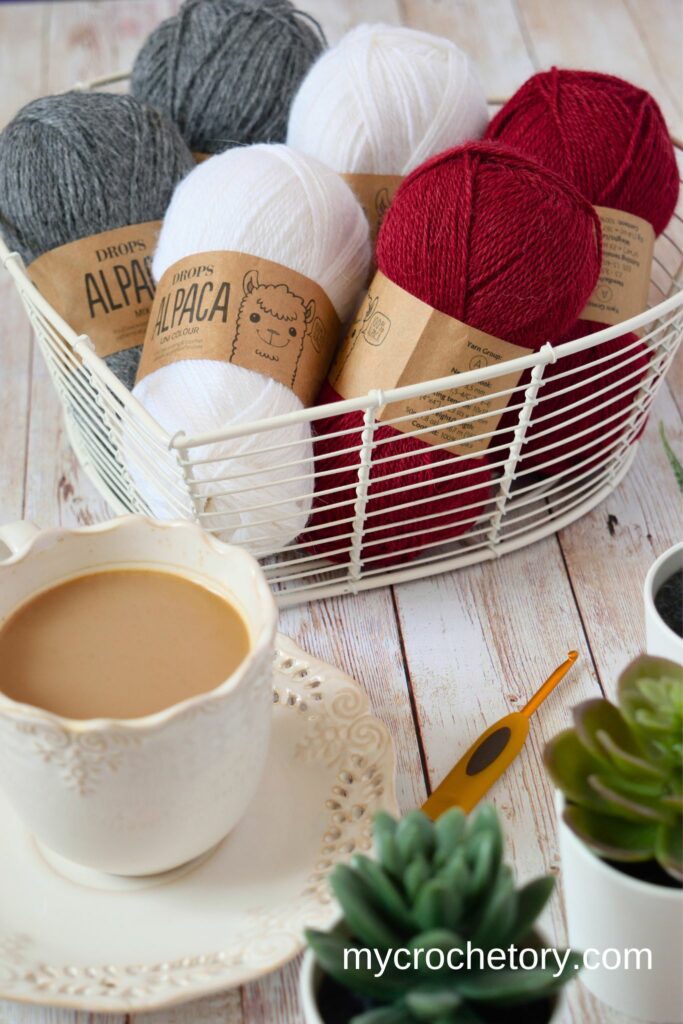
Exploring Yarn Choices
Now, let’s discuss yarn, the essential material for your crochet projects. Yarn comes in various types, such as soft cotton or warm wool. The type of yarn you choose greatly influences the outcome of your project.
For larger projects like blankets, thicker yarn provides coziness, while thinner yarn is ideal for lightweight items like hats. Whether you prefer the simplicity of crochet or the speed of knitting, both crafts offer endless opportunities for creativity.
So, whether you’re a novice or an expert, embrace the joy of crafting with your own hands.
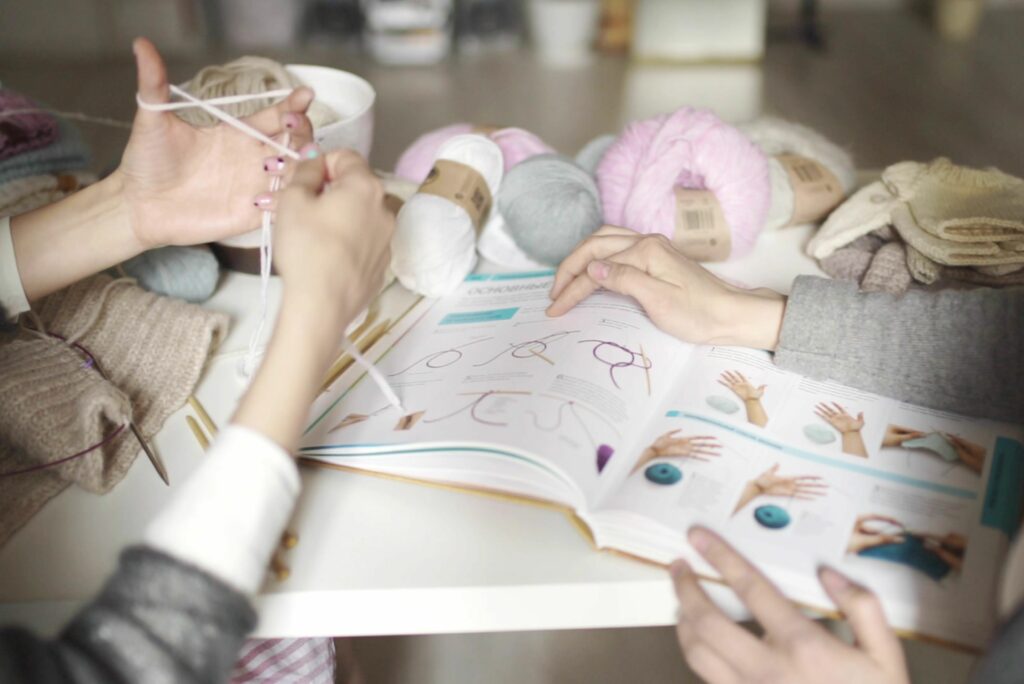
Exploring Knitting Patterns and Techniques
Now, let’s explore knitting patterns and techniques and how they relate to choosing the right yarn for your specific projects.
Knitting patterns can be simple or more complex. Some are easy for beginners, while others are harder. It’s important to know how hard a pattern is before you start.
For instance, the stockinette stitch is basic and creates a smooth, V-shaped fabric. It’s used for things like sweaters and scarves. The garter stitch is even simpler and makes a bumpy texture. It’s great for dishcloths or blankets.
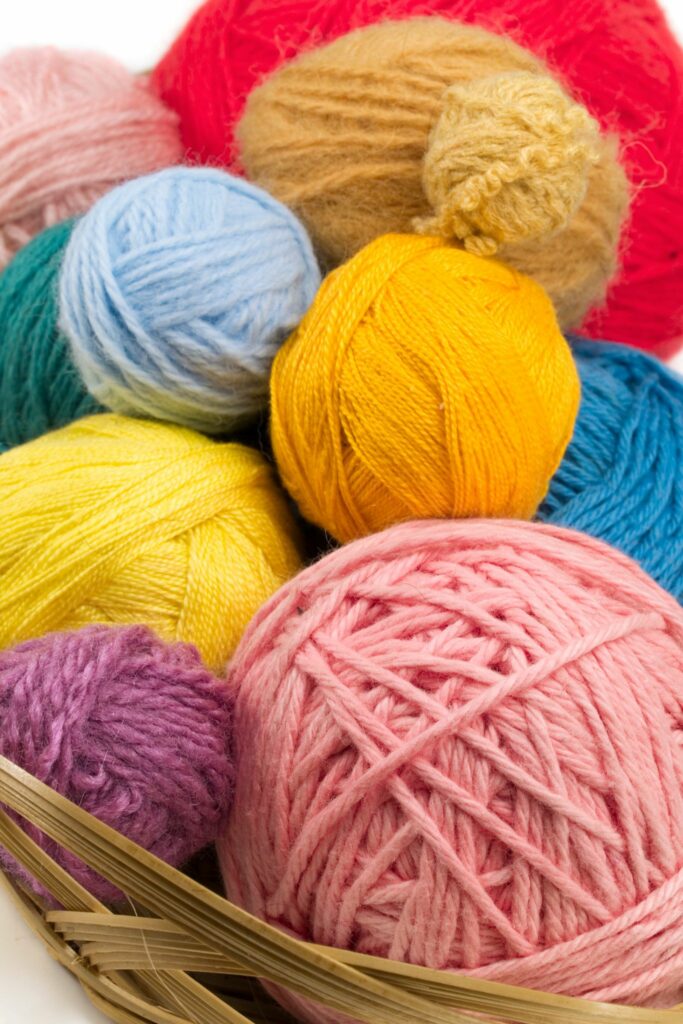
Considering Yarn Thickness and Texture
When you’re picking a knitting pattern, think about the thickness and texture of the yarn. Thick yarn makes chunky, cozy things like hats. Thin yarn makes light, delicate things like shawls.
As a general rule, thinner yarns are better suited for more intricate knit stitches, while thicker yarns are easier to work with for beginners.
For example, if you’re knitting a warm scarf for winter, you might want to use thick wool yarn. It’ll keep you warm when it’s cold outside. If you’re making a light shawl for summer, choosing thin cotton yarns is a good idea. They’re ideal for warm weather and can accommodate more delicate knit stitches.
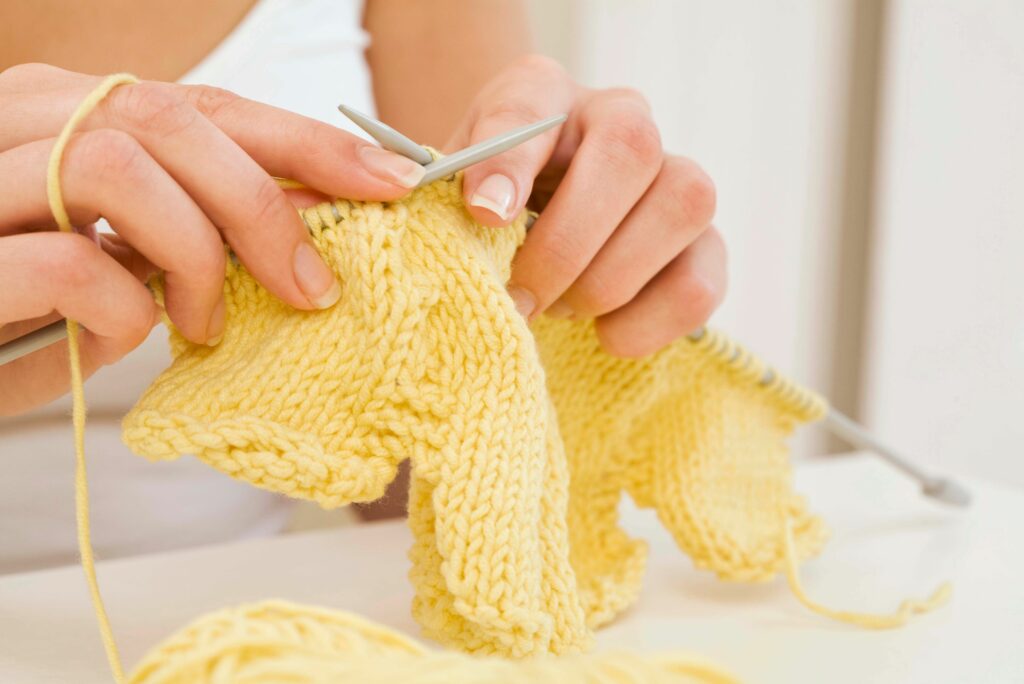
Exploring Knitting Tools and Techniques
Circular knitting needles are another tool to consider when working on different projects. They’re versatile and can be used for various projects, from small hats to large blankets. With circular knitting needles, you can create seamless garments and work in the round with ease.
The type of yarn can also change how your project looks. Some yarns have lots of colors, making stripes or patterns. Others change colors as you knit.
Experimenting with different yarns can add depth and character to your projects, making them truly unique.
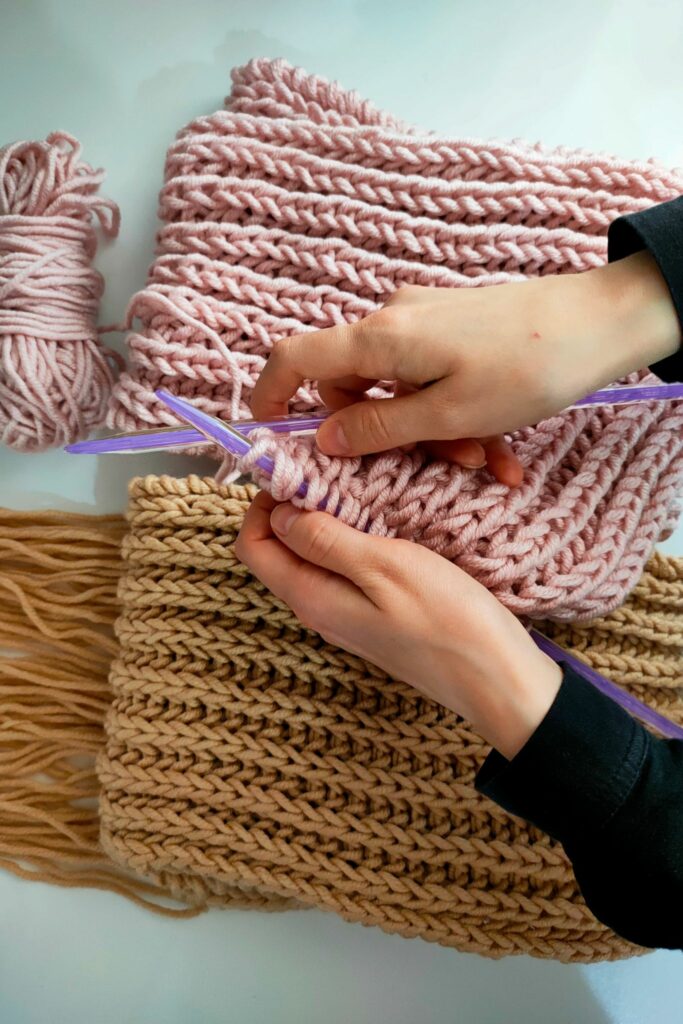
Knitting patterns offer good news for beginners as they can start with easier patterns and gradually progress to more challenging ones. For those looking to complete a knitting project quickly, choosing a pattern with fewer stitches may be ideal.
By selecting the right pattern and yarn combination, you can create beautiful and functional items with ease.
Remember, the key is to try different yarns and patterns to see what you like. Whether you’re new to knitting or an advanced knitter, there’s always something new to learn. So grab your needles and yarn, and let’s start knitting!
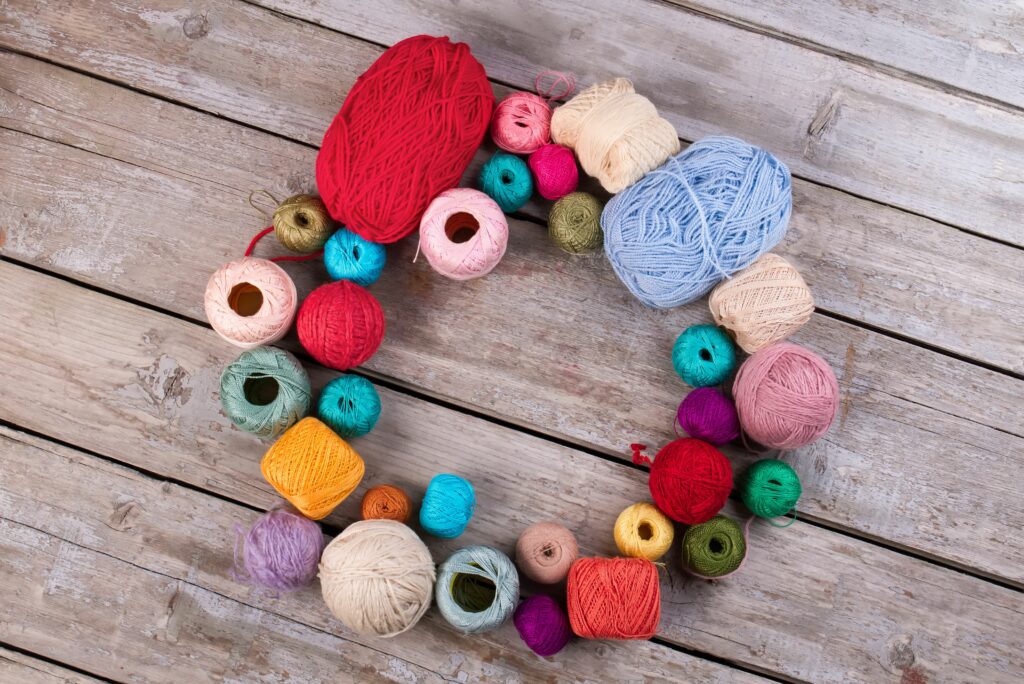
Comparing Yarn Types for Crochet and Knitting
Let’s take a closer look at the different yarn types used in crochet and knitting.
Yarn is like the building blocks of crochet and knitting projects. There are many different kinds to choose from, each with its own special qualities.
For starters, there’s wool yarn, which comes from sheep. It’s soft and warm, great for making cozy things like knit garments and blankets.
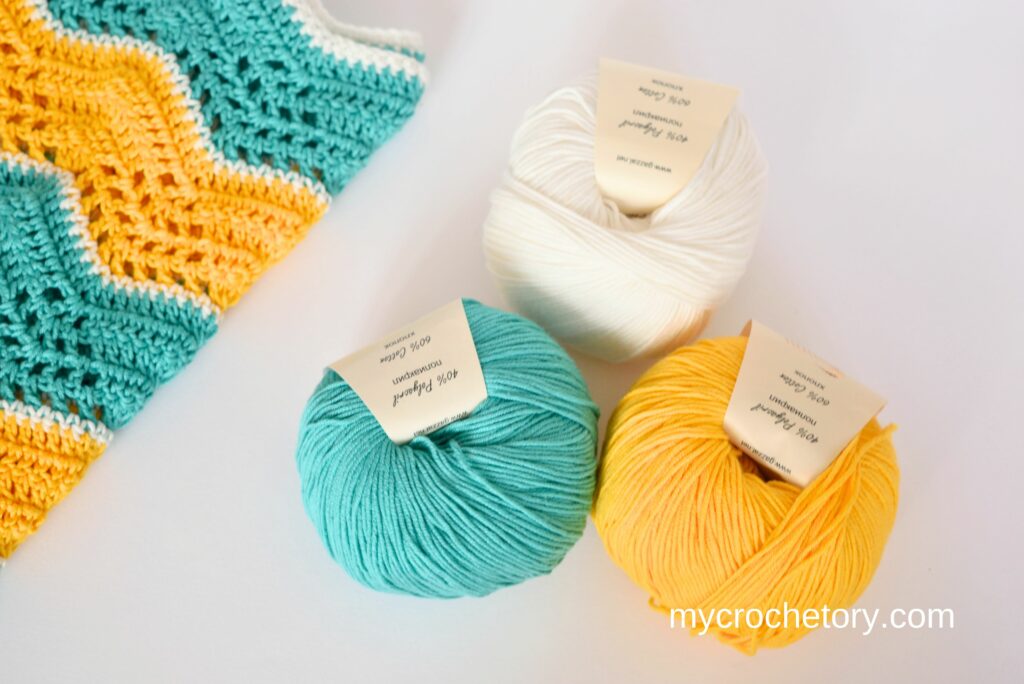
Then there’s cotton yarn, which is made from cotton plants. It’s cool and breathable, perfect for light, airy projects like summer tops or dishcloths.
Another option is acrylic yarn, which is made from synthetic fibers. It’s affordable and easy to take care of, making it good for everyday items like hats and scarves. Acrylic yarn comes in lots of different colors, so you can find just the right one for your project.
Factors to Consider When Choosing Yarn
When you’re picking yarn, there are a few things to think about. One is the weight of the yarn. Some yarns are thick and bulky, while others are thin and delicate. The weight of the yarn can affect how your project turns out.
You’ll also want to consider the texture of the yarn. Some yarns are smooth and silky, while others are fuzzy or bumpy. The texture can add interest to your project and make it look unique.
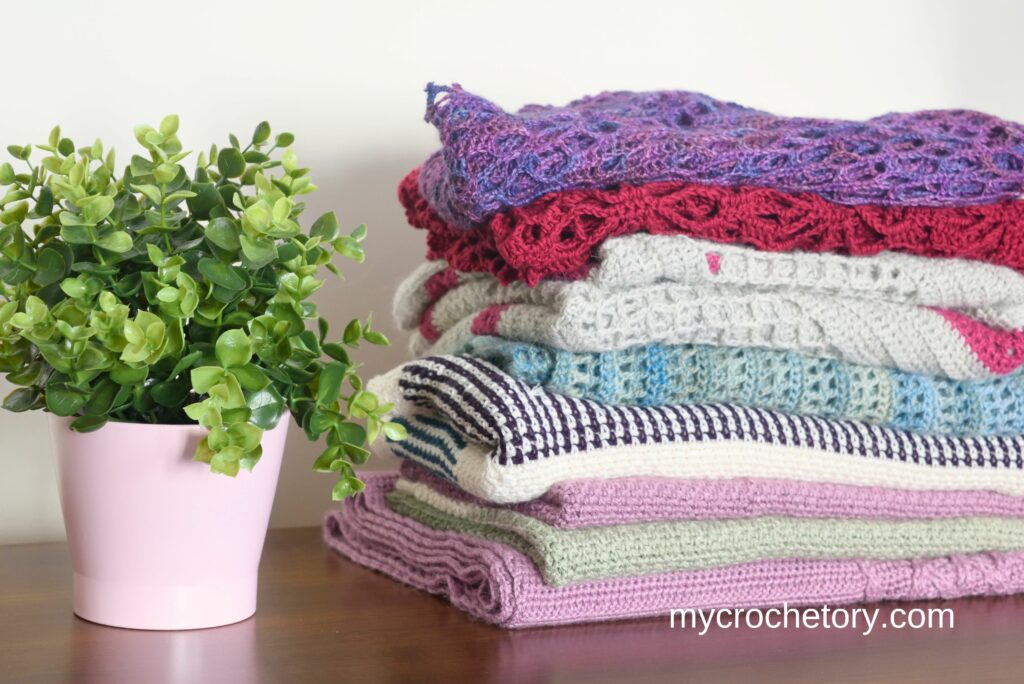
Yarn Selection for Different Projects
Crochet projects often require a single hook, while knitting may involve a pair of needles.
For larger projects, such as blankets or sweaters, choosing a durable and high-quality yarn is essential. Although some yarns may be more expensive, they can elevate the overall look and feel of your creation.
Finally, think about the color of the yarn. Some yarns are solid colors, while others have stripes or patterns. The color of the yarn can change the look of your project completely.
For example, if you’re making a warm winter hat, you might choose a thick wool yarn in a dark color. But if you’re making a lightweight scarf for spring, you might go for a thinner cotton yarn in a bright, cheerful color.

Whether you’re engaging in crochet or knitting, the selection of yarn is crucial for achieving the desired outcome in your yarn crafts. No matter what kind of project you’re working on, there’s a yarn out there that’s perfect for it.
So next time you’re at the craft store, take some time to explore the yarn aisle and find the perfect yarn for your next project.

Practical Considerations: Needles and Tools
Let’s talk about the tools you need for crochet and knitting. Whether you’re a beginner or an experienced crafter, having the right tools is essential for your projects.
There are three main types of needles: circular, double-pointed, and straight. Circular needles look like two straight needles joined by a flexible cable, making them perfect for larger projects like blankets.
Double-pointed needles are handy for knitting items such as socks in the round, while straight knitting needles are commonly used for knitting flat pieces like scarves.

Matching Needle Size to Yarn Thickness
It’s important to match your needle size to the thickness of your yarn. If you’re using thick yarn, you’ll need larger needles, whereas thinner yarn requires smaller needles. This matching ensures your stitches are just right for your project.
Other Essential Tools
Now let’s talk about some other tools you might need. Stitch markers, such as small rings or clips, are invaluable for marking important points in your pattern. They help you keep track of where you are in your project, especially when trying out a new skill or working with a specific yarn.
Stitch holders act like big safety pins, holding stitches when they’re not in use, particularly useful for larger projects or when you need to put sleeves on hold while you work on a sweater.
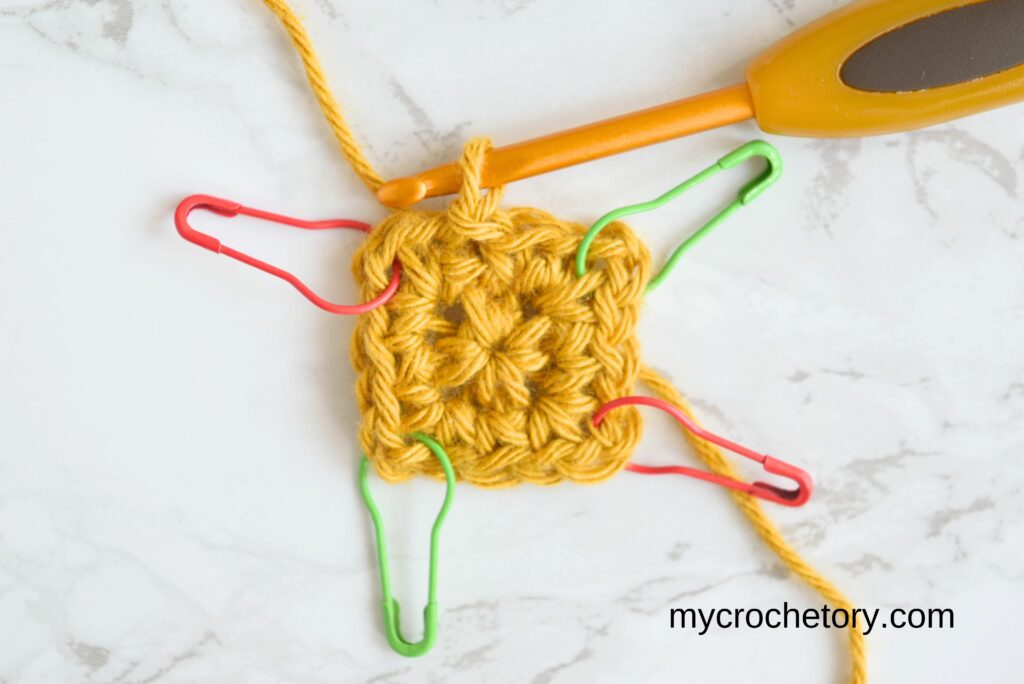
Other basic tools include tapestry needles for weaving in ends, scissors for cutting yarn, and a tape measure for checking your gauge. Investing in a set of knitting or crochet hooks in different sizes is also a good idea, allowing you to tackle various projects with ease.
With the right tools and a bit of practice, you’ll be well-equipped to take on new skills and larger projects in recent years. Don’t be afraid to try new things and have fun exploring the world of crochet and knitting!
Conclusion
To sum up, knowing about crochet and knitting yarn is important for crafters.
In this guide, we’ve talked about different yarn types and how they affect our projects. From choosing the right needles to trying out new stitches, there’s a lot to explore in the world of yarn crafting.
As you continue your crafting journey, don’t be afraid to experiment. Try different yarns and techniques to see what you like best. Whether you’re crocheting a cozy blanket or knitting a delicate shawl, there’s always something new to learn and discover.
MORE CROCHET ARTICLES
If you found this crochet article helpful, you might also like posts:
We’d love to hear about your crochet adventures and see your beautiful creations. Drop a comment below sharing your thoughts, questions, or even your favorite crochet tips! Your voice adds a vibrant thread to our forum community.
Sharing is caring! If you found this guide helpful, consider spreading the love. Click the share button and inspire other crocheters.
Stay in the loop with our latest crochet guides, tips, and inspiration. Subscribe to our newsletter for exclusive content straight to your inbox. Never miss a stitch—subscribe today!
Happy crocheting, and may your yarn always be tangle-free!
Join my Facebook Group and Official Ravelry Group where you can find necessary support, you can ask questions or share your finished projects.
You can also follow my Instagram, Facebook page and Pinterest.
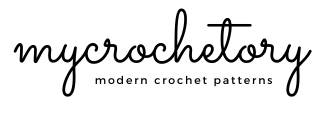
Leave a Reply